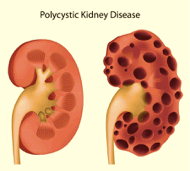 In an article published in a highly-regarded multidisciplinary journal, Proceedings of the National Academy of Sciences of the United States of America (PNAS), investigators at the St. John’s University (SJU) report findings from in vitro and in vivo studies that facilitate the research in the area of autosomal dominant polycystic kidney disease (ADPKD). The article, entitled “Function and Regulation of TRPP2 Ion Channel Revealed By a Gain-of-Function Mutant,” (http://www.pnas.org/content/113/17/E2363.full) elucidates the function and regulation of TRPP2 ion channel which impairment cause abnormal kidney development characteristic of polycystic kidney disease (PKD). ADPKD affects one in every 500-1,000 people. ADPKD causes kidney cysts that lead to end-stage renal disease, requiring dialysis and ultimately kidney transplant. TRPP2 has been hard to study because of the lack of the knowledge on how this channel is activated. In this paper, the leading author Dr. Mahmud Arif Pavel, corresponding author Dr. Yong Yu and their collaborators present a gain-of-function (GOF) mutant – a mutation that gives the TRPP2 protein enhanced activity – which allows them to gain deep insight into the protein’s function in both zebrafish embryos and Xenopus frog oocytes.
In an article published in a highly-regarded multidisciplinary journal, Proceedings of the National Academy of Sciences of the United States of America (PNAS), investigators at the St. John’s University (SJU) report findings from in vitro and in vivo studies that facilitate the research in the area of autosomal dominant polycystic kidney disease (ADPKD). The article, entitled “Function and Regulation of TRPP2 Ion Channel Revealed By a Gain-of-Function Mutant,” (http://www.pnas.org/content/113/17/E2363.full) elucidates the function and regulation of TRPP2 ion channel which impairment cause abnormal kidney development characteristic of polycystic kidney disease (PKD). ADPKD affects one in every 500-1,000 people. ADPKD causes kidney cysts that lead to end-stage renal disease, requiring dialysis and ultimately kidney transplant. TRPP2 has been hard to study because of the lack of the knowledge on how this channel is activated. In this paper, the leading author Dr. Mahmud Arif Pavel, corresponding author Dr. Yong Yu and their collaborators present a gain-of-function (GOF) mutant – a mutation that gives the TRPP2 protein enhanced activity – which allows them to gain deep insight into the protein’s function in both zebrafish embryos and Xenopus frog oocytes.
Dr. Mahmud Arif Pavel describes the discovery and properties of a gain-of-function mutant of TRPP2, an ion channel playing an important role in kidney development and function. TRPP2 is a polycystin, and it forms homomeric calcium-permeable cation channels in the Endoplasmic Reticulam. It also associates with PKD1 and other proteins to form heteromeric channel complexes. Mutations in TRPP2 and PKD1 causes autosomal dominant cystic kidney disease, one of the most common human genetic diseases. Despite its physiological importance, TRPP2 has not been studied extensively, especially in cells, since its activation mechanism is still unknown. Through mutagenesis scanning, the authors found a point mutation, F604P, that rendered TRPP2 constitutively active, at least when it was expressed in Xenopus oocytes. The authors then characterized the biophysical properties of this mutant channel and demonstrated its potential utility in rescuing a disease-mimicking phenotype in an animal model. This is the first time that an open TRPP2 channel associating ADPKD is obtained and studied in a live cell.
Coupled to this complex care management, ADPKD is associated with high healthcare costs since many individuals progress to kidney failure requiring dialysis and/or transplantation at an earlier age than other kidney patients. Currently, no drug has been approved by the U.S. Food and Drug Administration to treat autosomal dominant PKD, which affects a half million Americans and more than 12 million people worldwide. The disease is characterized by the development of fluid-filled cysts in both kidneys, leading to end-stage renal disease, usually around age 50 to 60. This GOF mutant will be a useful tool for studying the function, regulation, pharmacology and physiological roles of TRPP2, and for screening potential TRPP2 antagonists. Once the pathways underlying impaired TRPP2 in PKD are more fully understood with the help of current discovery, therapeutic interventions can be designed to disrupt those pathways. This works will likely move the field of ADPKD forward significantly.
